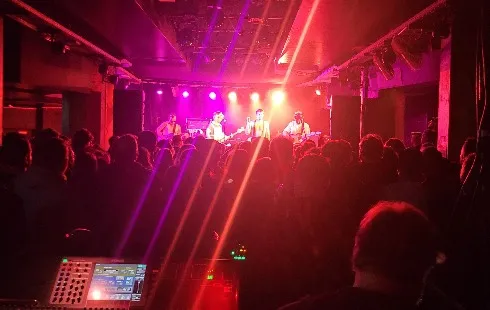
Pantone's Color of the Year an Endless Neutral Loop
Section: Fashion
After a delay of several years, Berlin is converting streetlights in Steglitz-Zehlendorf and Marzahn-Hellersdorf into charging points for electric cars. In the second quarter, the first 200 lights are to be equipped with charging connections, the Senate Transport Administration announced on Monday.
As part of a tender, the procurement, installation and operation of the charging points had been awarded to the company Ubitricity. This means that the long-planned project can now finally get underway, it said. Up to 1000 connections for charging electric cars are to be installed in the lanterns of the two outer districts in the course of the project.
The start of the project has been delayed for years. Originally, the first charging points were to be installed as early as 2019. The concept initially envisaged that the technology would be installed inside the poles. However, it quickly became clear that the lack of space in the poles and legal requirements made the planned installation impossible.
Instead, Ubitricity developed a box with charging technology that could be screwed onto the outside of the lampposts. But the schedule was long gone. Last year, the project had to be postponed again because no company could be found to install the technology during a tendering process. It was only when the project was awarded again that developer Ubitricity itself got its chance.
The project is intended to test "whether the use of the existing streetlight infrastructure, despite comparatively low charging power, is suitable for the nationwide supply of charging points for electric cars in public spaces, for example for charging in residential areas," according to the transport administration.
The charging system developed by Ubitricity with an output of only 3.7 kilowatts will be used on the masts. This is significantly less than the usual charging stations offer with a power of 11 kilowatts or more. The energy level in the batteries rises correspondingly slowly. The system is, therefore, more suitable for places where the cars are parked for a long time and can be charged overnight, for example.
Because of the many delays, funding for the project from the German Federal Ministry of Economics and Climate Protection is also coming to an end. To ensure that up to 800 lanterns can be retrofitted after the first 200 systems, the Senate has now applied for an extension of the project period. According to the transport administration, the project is expected to be approved.
Image by Menno de Jong

Section: Fashion

Section: News

Section: Fashion

Section: Arts

Section: Politics

Section: Health Insurance

Section: News

Section: News

Section: News

Section: Arts
Both private Health Insurance in Germany and public insurance, is often complicated to navigate, not to mention expensive. As an expat, you are required to navigate this landscape within weeks of arriving, so check our FAQ on PKV. For our guide on resources and access to agents who can give you a competitive quote, try our PKV Cost comparison tool.
Germany is famous for its medical expertise and extensive number of hospitals and clinics. See this comprehensive directory of hospitals and clinics across the country, complete with links to their websites, addresses, contact info, and specializations/services.
Join us for an enchanting Christmas adventure at the Münchner Marionettentheater! Experience the marionette play 'Der verschwundene Wunschzettel' by Siegfried Böhmke, featuring our beloved Kasperl Larifari and his little friend Stupsi. As Christmas approaches, both Kasperl and Stupsi have prepared...



No comments yet. Be the first to comment!